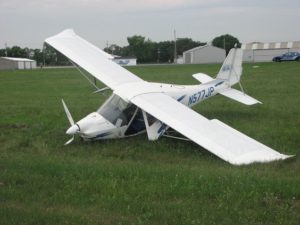What is non-owned or renters insurance?
Non-owned or as it is more commonly called, renters insurance, is a liability policy that can provide bodily injury, property damage and aircraft hull protection for a pilot that is flying an aircraft they do not own.
“Do not own” is a key phrase. You do not have to own an aircraft to be found liable for damage or injuries. It is important to note that this is liability coverage; in addition, it is not only for rental aircraft. A borrowed, rented or even a flying club aircraft can put the
pilot in a position of potential liability.
Very simply put, liability means the coverage is used if the named insured is found liable for damage or injury to a third party. For example, if a person is flying an aircraft that has an engine failure or some other mechanical problem that is not the pilot’s fault and
damages occur, non-owned insurance would not necessarily pay the claim.
Many people feel they do not need to buy insurance on their aircraft and they can let their friends fly their aircraft if the friends have non-owned insurance and they are protected. Not true. If the pilot is not found liable, there is no coverage. When a renter signs the rental agreement, they are agreeing to pay the owner for the damages. Usually that consists of the paying the owners deductible. However, the Fixed Base Operator, flight school or the owner of the aircraft actually gives up their right to subrogation when they accept the claim. Once the claim is paid, the insurance company can go after the pilot or third party that was liable. That is the subrogation clause.
Non-owned comes in two basic parts. Bodily injury and property damage (BIPD) liability and hull damage liability.
So how much should you buy? Like any insurance product, check with an estate and financial adviser (or lawyer) to figure out what level you need to buy. However, be careful, non-owned is very reasonable protection, but it can cost a lot of money per year. Buying non-owned insurance often costs as much as an aircraft owner pays for owned insurance.
You have to buy BIPD as a minimum. Most buyers that have any level of assets (a home, car, etc) usually opt for at least a million dollars, usually with a $100,000 sub limit. This coverage is quite reasonably priced.
The high cost comes in the hull protection. One option is to buy enough to cover the total loss of the aircraft that you are flying. Another option is to buy enough to cover at least half the value. The reasoning is that there will probably be some salvage value.
If you have more questions, feel free to contact us.
Or if you need a quote, click here.

